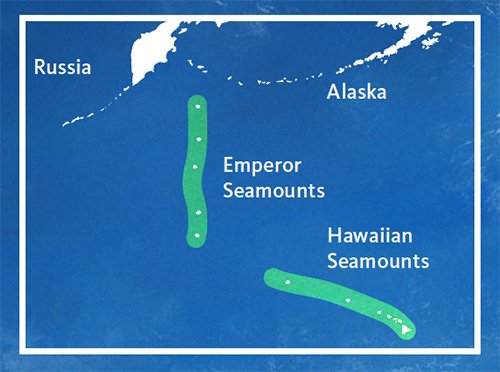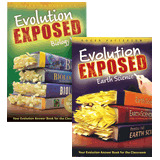
The Hawaiian Islands: String of Pearls
The Hawaiian Islands make up a beautiful string of pearls that may seem like the closest thing to paradise on earth today. Viewed from above, however, this alluring archipelago affirms an account of past catastrophe.
These beautifully aligned gems didn’t pop out of the sea by accident or instantaneous creation. They were produced by volcanic eruptions in the aftermath of the global flood. During that catastrophic event, the earth’s crust broke into tectonic plates. Convective flow (the transfer of heat by the movement of fluids, in this case rising magma) propelled some of the ocean floor plates rapidly under the Pacific Ocean’s waters. One geological model suggests that the erupting magmas from a hot spot (a plume of rising magma) in the mid-Pacific could only make small islands before the plates moved on rapidly. But as the plates slowed down and came to a halt at the end of the flood, the erupting magmas had more time to build islands that became progressively larger. The last island at the end of the string, Hawaii’s Big Island, is still growing today because the volcanoes remain active over the hot spot.
The biblical account of an earth-ravaging flood helps explain this imperfect paradise. Though our world is broken, pearls of beauty remain.
- By some estimates, the volcanic material that created Hawaii’s eight main islands could cover the entire state of California one mile thick.
- The Big Island is made up of five still-active volcanoes. The tallest towers to 13,803 feet (4,207 m) above sea level. Measured from the seafloor, it is almost a mile taller than Mt. Everest!
A Long Strand

Eruptions at the end of the flood produced dozens of islands stretching over 3,600 miles (5,800 km). The first islands, called the Emperor Seamounts, were small. Most never grew large enough to reach the ocean’s surface. When used as a relative dating method, radiometric potassium-argon dating shows that these seamounts are oldest, and the Hawaiian Islands are youngest.
Hot Spot

Most of the world’s volcanoes form where crustal plates crash into each other, creating pathways for rising magmas. Hawaii’s Big Island sits on top of a hot spot, or mantle plume, where hot material breaks through the thin ocean crust.
Answers Magazine
July–September 2022
Recommended Resources

Answers in Genesis is an apologetics ministry, dedicated to helping Christians defend their faith and proclaim the good news of Jesus Christ.
- Customer Service 800.778.3390
- © 2024 Answers in Genesis





